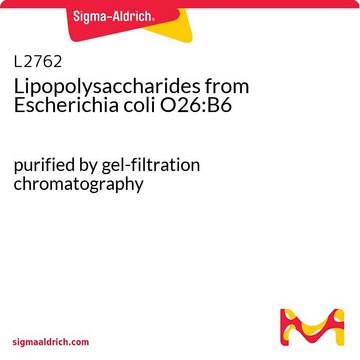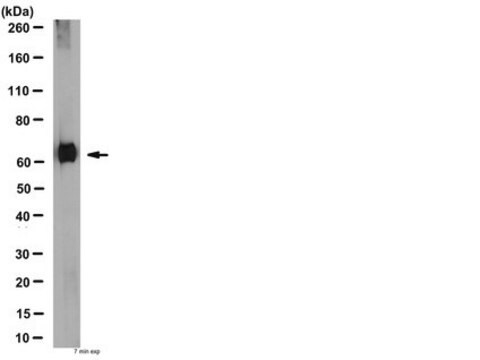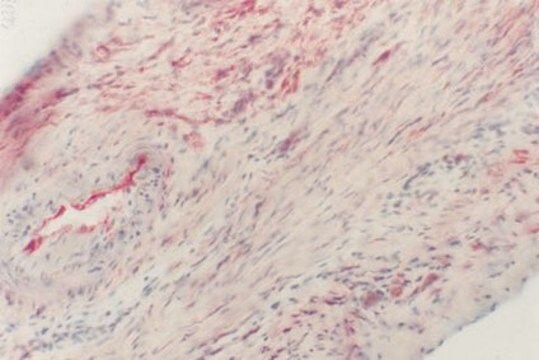L2137
Lipopolysaccharides from Salmonella enterica serotype minnesota
purified by gel-filtration chromatography
Sinónimos:
LPS
About This Item
Productos recomendados
biological source
Salmonella enterica (Serotype minnesota)
Quality Level
form
lyophilized powder
purified by
gel-filtration chromatography
impurities
<1% Protein
color
white
solubility
water: 4.90-5.10 mg/mL, cloudy to hazy, colorless
shipped in
ambient
storage temp.
2-8°C
¿Está buscando productos similares? Visita Guía de comparación de productos
General description
Application
- TRPV4 is not the molecular sensor for bacterial lipopolysaccharides-induced calcium signaling: This study explores the signaling pathways activated by lipopolysaccharides from Salmonella enterica serotype Minnesota, demonstrating that TRPV4 is not involved, advancing understanding of immune responses to bacterial endotoxins (Wang et al., 2023).
Biochem/physiol Actions
Preparation Note
Other Notes
Related product
Storage Class
11 - Combustible Solids
wgk_germany
WGK 3
flash_point_f
Not applicable
flash_point_c
Not applicable
Elija entre una de las versiones más recientes:
¿Ya tiene este producto?
Encuentre la documentación para los productos que ha comprado recientemente en la Biblioteca de documentos.
Los clientes también vieron
Contenido relacionado
Lipopolysaccharide (LPS) is the major component of the outer membrane of Gram-negative bacteria. Lipopolysaccharide is localized in the outer layer of the membrane and is, in noncapsulated strains, exposed on the cell surface.
Nuestro equipo de científicos tiene experiencia en todas las áreas de investigación: Ciencias de la vida, Ciencia de los materiales, Síntesis química, Cromatografía, Analítica y muchas otras.
Póngase en contacto con el Servicio técnico



